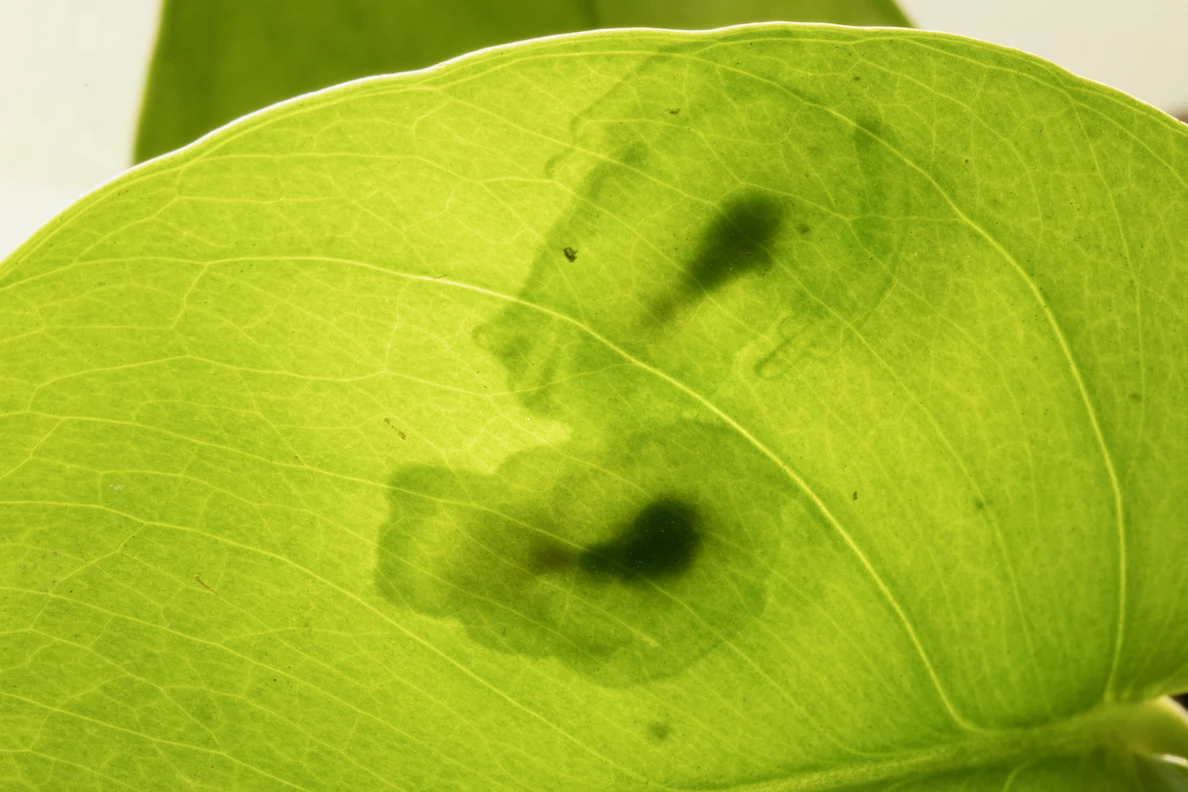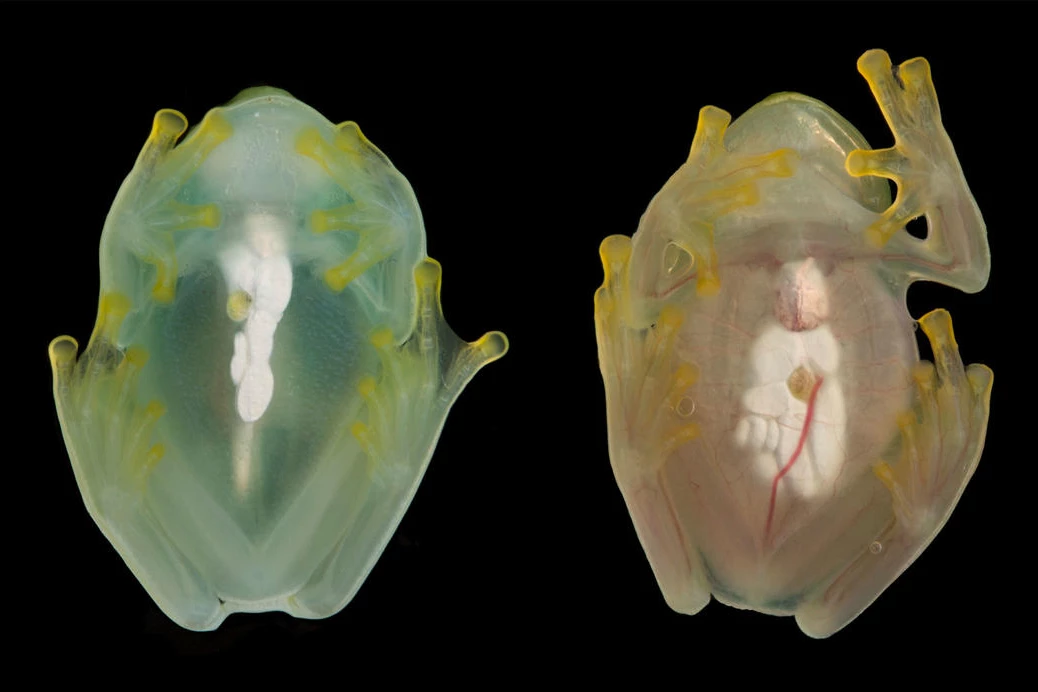Glassfrogs are so-named because when they sleep, they turn their bodies transparent in order to evade predators. Scientists have now discovered that they do so by moving their red blood cells into their liver – and the finding could have implications for human medicine.
Found throughout the American tropics, glassfrogs simply look green when they're out and about at night.
During the day, the nocturnal amphibians sleep on the underside of translucent leaves. As they do so, they turn their skin and muscle tissue transparent, leaving just their bones, eyes and internal organs visible. In this way, they become almost invisible to any predators that don't look closely at the leaf.
While many aquatic creatures also use transparency to hide from predators, glassfrogs are one of only a few land animals known to do so. One thing that holds other creatures back is their very visible, opaque red blood cells. Some fish get around this problem by not producing red blood cells, but such is not the case with the frogs.
In order to find out what strategy the amphibians do use, a team led by scientists from the American Museum of Natural History and Duke University studied captive Hyalinobatrachium fleischmanni glassfrogs, utilizing a technique known as photoacoustic imaging.
In a nutshell, photoacoustic imaging involves shining harmless laser light into biological tissue, where it's absorbed by molecules – such as those in red blood cells – and converted into ultrasound waves. By analyzing those waves, the scientists were able to map the location of red blood cells within the body.
Importantly, the technique didn't require the frogs to be restrained, killed or injected with contrasting agents, any one of which would have caused them to cease being transparent.

It was found that when sleeping, the frogs move almost 90% of their red blood cells from their bloodstream into their liver, making their skin and muscle tissue two to three times more translucent than before. Additionally, their liver has a mirror-like reflective outer membrane, helping to decrease its visibility also.
In most other vertebrates, grouping the red blood cells together in such a fashion could cause potentially lethal clots to form in the blood vessels. This never happens with the glassfrogs, however. The scientists are now trying to determine why this is the case, in hopes that the answer may lead to medications for preventing blood clots in people.
"This is the first of a series of studies documenting the physiology of vertebrate transparency, and it will hopefully stimulate biomedical work to translate these frogs’ extreme physiology into novel targets for human health and medicine," said the American Museum of Natural History's Jesse Delia, who led the study along with Duke University's Carlos Taboada – both scientists are postdoctoral fellows.
A paper on the research was recently published in the journal Science.
Sources: American Museum of natural History, Duke University via EurekAlert




